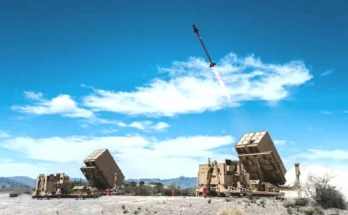
After decades of what can only be classified as basic neglect following the end of the Cold War and the collapse of the Soviet Union, U.S. naval warfare has been experiencing a renaissance following the long period when military funding was focused primarily on airborne and land-based operations such as those in Iraq and Afghanistan. Such renewed naval attention continues to be driven by China’s increasing aggression in the South China Sea around the Spratly Islands, Russia’s renewed push into the Arctic Ocean, and aggressive rants coming out of North Korea. In response, naval inventories are being replenished and new technologies are being developed.
With this new threat scenario in mind, the U.S. Navy is hoping to reach a fleet size of up to 523 ships, with 373 being manned ships and 150 unmanned ships.
The chances of a 500-plus-size fleet actually happening are very slim. It takes, on average, 10-15 years for a new ship class to go from paper to water. During that period, there are numerous ways to delay or even stop such construction, with the number one means being simply a decision by the next presidential administration (usually of the party opposing the previous administration) to undo the plans of its predecessor.
Even if the U.S. Navy were ever to reach its end of the rainbow pot-of-gold number, it would be unsustainable. The U.S. Navy has the highest ship turnover of any navy in the world. This is not due to the quality of the ships built (far from it), but rather to the high mileage wear and tear on each ship. The U.S. Navy is an offense-driven service (as compared to homeland defense as in many nations), and, as such, its ships must first sail thousands of miles just to reach their operational theater zone before they can even start to get to work. U.S. Navy ships chalk up more miles than a rental car on a cross-country family vacation.
Additionally, where would one get the personnel to crew all these ships? The average crew for a Gerald R. Ford (CVN 78) class aircraft carrier numbers 4,600, and the U.S. Navy plans on having 10 such carriers. An Arleigh Burke (DDG 51) class destroyer needs a crew of 320 and the Navy wants 90 of these ships.
Furthermore, the U.S. does not have the industrial shipbuilding capacity to reach such numbers anytime soon. Military shipyard space is rather limited at the moment. There just isn’t room to ramp up warship construction. And what about the additional skilled workforce needed to build these extra ships? Hello – labor shortage and quiet quitting anyone? In fact, there is a good chance the current capacity to supply the U.S. Navy might actually shrink in the near future, as the U.S. is strongly considering turning over its next few builds of Virginia class attack submarines to Australia while that strong ally builds its own nuclear submarine industry from the ground up – which is going to take several years.
For more details, see FI’s new White Paper, Analysis/Perspective of the U.S. Navy Modernization Plan.
Forecast International’s Warships Forecast covers the key submarine, aircraft carrier, surface combatant, amphibious warfare, and underway replenishment programs that will dominate the warship industry over the next decade and beyond. It details the market impact of numerous key programs, including the Franco-Italian FREMM class frigate, the Queen Elizabeth class aircraft carrier, and the SSN-774 Virginia class submarine. Each report contains a full design history of the ship, an extensive list of major contractors and subcomponent suppliers, and a wealth of information on the ship’s performance and operational capabilities. Click here to learn more.
For 50 years, Forecast International intelligence reports have been the aerospace and defense industry standard for accurate research, analysis, and projections. Our experienced analysts compile, evaluate, and present accurate data for decision makers. FI's market research reports offer concise analysis of individual programs and identify market opportunities. Each report includes a program overview, detailed statistics, recent developments and a competitive analysis, culminating in production forecasts spanning 10 or 15 years. Let our market intelligence reports be a key part of reducing uncertainties and mastering your specific market and its growth potential. Find out more at www.forecastinternational.com



